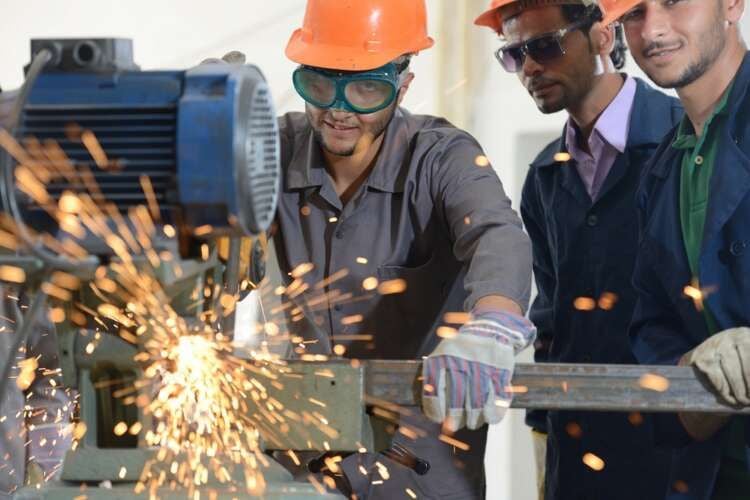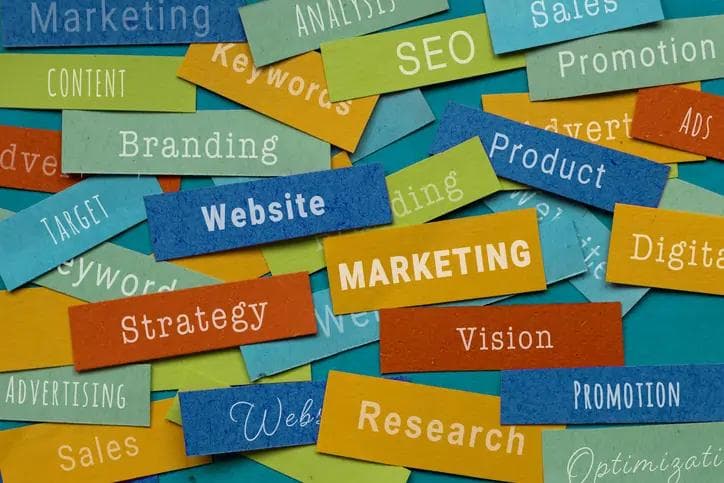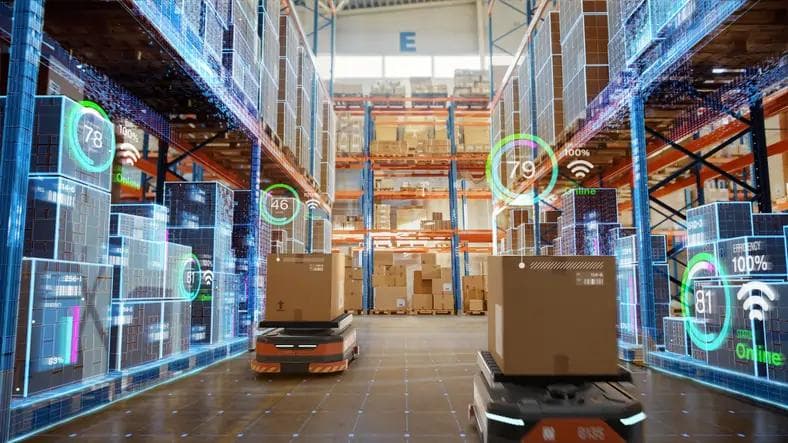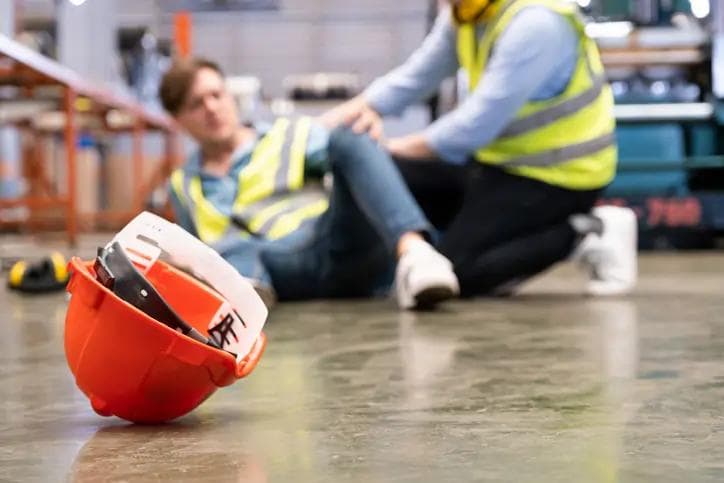Why manufacturers should now plan their Covid exit strategy, and what to consider
Why manufacturers should now plan their Covid exit strategy, and what to consider
Published by Jessica Weisman-Pitts
Posted on August 11, 2021

Published by Jessica Weisman-Pitts
Posted on August 11, 2021

By Eric Stoop CEO of EASE, Inc and Murray Sittsamer, President of Luminous Group
The light at the end of the pandemic tunnel is coming into view for all businesses and sectors. And just like many industries, manufacturing now has the chance to take a considered approach towards its post-pandemic future, and evaluate the lessons learned since lockdown was announced in March 2020, to ensure it comes out the other side stronger. Manufacturers should now be turning their attention to developing a Covid-19 exit strategy to adapt to a new way of working in a post-pandemic world. If they’re not, they risk falling behind.
There are different facets to this of course, but the major factors manufacturers must consider when planning their Covid exit strategy and returning to ‘normal’ are people, process and of course technology. These fundamental pillars should be a key focus for manufacturers re-aligning their strategies.
A greater focus on staff wellbeing and development
The pandemic’s impact on the manufacturing sector has been huge, and had led to the key question being asked by leaders in the sector: How do we keep staff safe and supported?
Putting in place processes and measures to ensure physical and mental health wellbeing will have to be a key strategy for manufacturers moving forward if they are to retain and attract the best talent. The manufacturing sector has, in the past, at times adopted a ‘leave your problems at the door when you come in’ kind of attitude, but now, greater HR support will be seen across the industry. In fact, in the US, some companies are even hiring external support, such as outside counsellors, to maintain good support levels for staff members. Communication will certainly improve between senior leaders and plant floor workers moving forward, and staff members will expect it to, more importantly. Regular catch ups with line managers, messages of support and ‘checking in’ on workforces to ensure they are well will become the norm.
Safety measures, such as cordoned places of work to physical distance, one-way systems, hand sanitising stations and others, will likely all remain in place and need to be incorporated into exit strategies.
In addition to support, manufacturers also need to ensure they are developing staff with training and upskilling opportunities too. Flexible working will remain in the sector, and must be a major consideration for manufacturers, but it does create a possibility of skills gaps being present on the plant floor. If, for example, a particular staff member is the only person who knows how to carry out an audit, but they are working remotely, then it’s important that other members of staff can carry out this function in their absence. Greater levels of cross-training across processes and technologies must be carried out to mediate against the knowledge gaps being present on a plant floor at any one time.
Risk assessments and contingency planning
The pandemic came out of the blue and hit the manufacturing sector hard – we simply didn’t see it coming, just like every industry. Risk assessment should certainly form part of a business’s strategy, so companies can better control the aspects that are in their control. Quarterly, or even monthly, drills will likely become common place to prepare against such unexpected events, should they occur again. The pandemic has shown the industry where it needs to improve in light of such a seismic impact. Ultimately, manufacturers survived the pandemic by fighting fires where they arose, but this isn’t sustainable moving forward.
Indeed, a requirement of ISO 9001 & IATF 16949 now is the carrying out of contingency planning, thus many potential scenarios will continue to be mapped out so a business can better predict the impact of a major event impacting the industry.
Strengthening of supply chains
Probably more than any other area of the manufacturing industry, the pandemic highlighted how delicate supply chains are. As a result, there will be more scrutiny on the whole supply chain. Such scrutiny is already in place in the automotive and aerospace industries in particular, in line with the applicable Supplier Quality Management system. This system provides a guide for companies to focus on their suppliers’ ability meet the specifications of the company’s product, be they performance or cosmetic related. But this will extend to overseeing a supplier’s method of transportation, their suppliers’ own contingency plans and how product shortages can be combatted – and this should absolutely form part of an exit strategy. Manufacturing companies should seek assurances that their supply chains are robust throughout.
But it’s important to look further ahead into the future to strengthen supply chains. Education programmes on the study of supply chains have grown in number over the last few decades, and this trend will continue to grow in light of the pandemic. Manufacturers would be well placed to look ahead at the training programmes they are running and jobs they are creating that are related to procurement, supply chain management and supply chain risk assessment as part of their ongoing strategies.
Improving auditing measures
When the pandemic gripped the industry, many manufacturers jumped to remote quality system audits. It showed it could be done, with some imaginative innovations along the way, such as feeds between laptops and a head camera, to see a worker or process on the plant floor. While this is only a baby step, it is a sign that audits are being carried out through a mix of on-site and off-site methods – and this will continue. For safety and cost savings, it is likely that a trend will be created where reviewing documents will be done off-site, while the physical audit itself will be carried out on-site. Manufacturers must ensure their future auditing processes and supporting systems are developed with this trend in mind.
Digitising audits with a solution like EASE is going to be a key goal for manufacturers if they are to ensure plants are operating efficiently and productively. Industry 4.0 has been somewhat sped up by the pandemic, and if plant floors are to continue becoming digitally transformed, then strategies must be instilled to continue the technological advancements of factories. Flexible working is here to stay, and so is the need for digital transformation, therefore we encourage manufacturers to react.
By Eric Stoop CEO of EASE, Inc and Murray Sittsamer, President of Luminous Group
The light at the end of the pandemic tunnel is coming into view for all businesses and sectors. And just like many industries, manufacturing now has the chance to take a considered approach towards its post-pandemic future, and evaluate the lessons learned since lockdown was announced in March 2020, to ensure it comes out the other side stronger. Manufacturers should now be turning their attention to developing a Covid-19 exit strategy to adapt to a new way of working in a post-pandemic world. If they’re not, they risk falling behind.
There are different facets to this of course, but the major factors manufacturers must consider when planning their Covid exit strategy and returning to ‘normal’ are people, process and of course technology. These fundamental pillars should be a key focus for manufacturers re-aligning their strategies.
A greater focus on staff wellbeing and development
The pandemic’s impact on the manufacturing sector has been huge, and had led to the key question being asked by leaders in the sector: How do we keep staff safe and supported?
Putting in place processes and measures to ensure physical and mental health wellbeing will have to be a key strategy for manufacturers moving forward if they are to retain and attract the best talent. The manufacturing sector has, in the past, at times adopted a ‘leave your problems at the door when you come in’ kind of attitude, but now, greater HR support will be seen across the industry. In fact, in the US, some companies are even hiring external support, such as outside counsellors, to maintain good support levels for staff members. Communication will certainly improve between senior leaders and plant floor workers moving forward, and staff members will expect it to, more importantly. Regular catch ups with line managers, messages of support and ‘checking in’ on workforces to ensure they are well will become the norm.
Safety measures, such as cordoned places of work to physical distance, one-way systems, hand sanitising stations and others, will likely all remain in place and need to be incorporated into exit strategies.
In addition to support, manufacturers also need to ensure they are developing staff with training and upskilling opportunities too. Flexible working will remain in the sector, and must be a major consideration for manufacturers, but it does create a possibility of skills gaps being present on the plant floor. If, for example, a particular staff member is the only person who knows how to carry out an audit, but they are working remotely, then it’s important that other members of staff can carry out this function in their absence. Greater levels of cross-training across processes and technologies must be carried out to mediate against the knowledge gaps being present on a plant floor at any one time.
Risk assessments and contingency planning
The pandemic came out of the blue and hit the manufacturing sector hard – we simply didn’t see it coming, just like every industry. Risk assessment should certainly form part of a business’s strategy, so companies can better control the aspects that are in their control. Quarterly, or even monthly, drills will likely become common place to prepare against such unexpected events, should they occur again. The pandemic has shown the industry where it needs to improve in light of such a seismic impact. Ultimately, manufacturers survived the pandemic by fighting fires where they arose, but this isn’t sustainable moving forward.
Indeed, a requirement of ISO 9001 & IATF 16949 now is the carrying out of contingency planning, thus many potential scenarios will continue to be mapped out so a business can better predict the impact of a major event impacting the industry.
Strengthening of supply chains
Probably more than any other area of the manufacturing industry, the pandemic highlighted how delicate supply chains are. As a result, there will be more scrutiny on the whole supply chain. Such scrutiny is already in place in the automotive and aerospace industries in particular, in line with the applicable Supplier Quality Management system. This system provides a guide for companies to focus on their suppliers’ ability meet the specifications of the company’s product, be they performance or cosmetic related. But this will extend to overseeing a supplier’s method of transportation, their suppliers’ own contingency plans and how product shortages can be combatted – and this should absolutely form part of an exit strategy. Manufacturing companies should seek assurances that their supply chains are robust throughout.
But it’s important to look further ahead into the future to strengthen supply chains. Education programmes on the study of supply chains have grown in number over the last few decades, and this trend will continue to grow in light of the pandemic. Manufacturers would be well placed to look ahead at the training programmes they are running and jobs they are creating that are related to procurement, supply chain management and supply chain risk assessment as part of their ongoing strategies.
Improving auditing measures
When the pandemic gripped the industry, many manufacturers jumped to remote quality system audits. It showed it could be done, with some imaginative innovations along the way, such as feeds between laptops and a head camera, to see a worker or process on the plant floor. While this is only a baby step, it is a sign that audits are being carried out through a mix of on-site and off-site methods – and this will continue. For safety and cost savings, it is likely that a trend will be created where reviewing documents will be done off-site, while the physical audit itself will be carried out on-site. Manufacturers must ensure their future auditing processes and supporting systems are developed with this trend in mind.
Digitising audits with a solution like EASE is going to be a key goal for manufacturers if they are to ensure plants are operating efficiently and productively. Industry 4.0 has been somewhat sped up by the pandemic, and if plant floors are to continue becoming digitally transformed, then strategies must be instilled to continue the technological advancements of factories. Flexible working is here to stay, and so is the need for digital transformation, therefore we encourage manufacturers to react.
Explore more articles in the Business category











